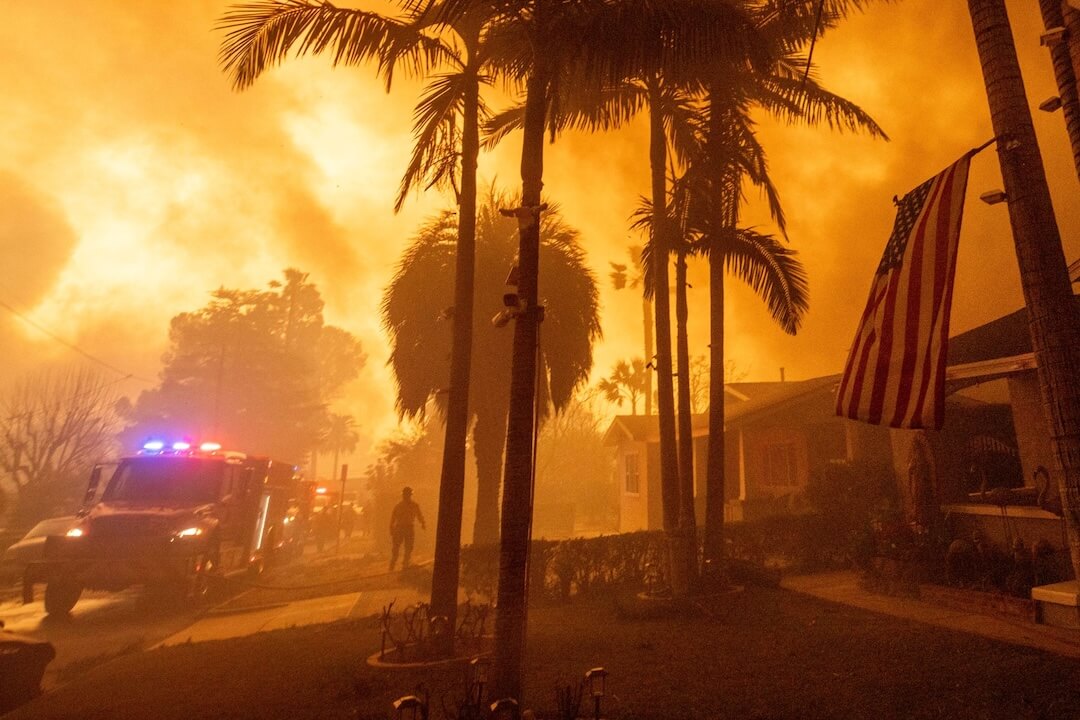They first emerged along roads in the 1990s when an alarming number of immigrants, fresh from a terrifying trek across the border, were struck and killed by unseeing motorists.
If you live in Kansas or Maine or Wyoming, you would never encounter these signs. In your world, they would be out of context. They would not make sense.
But in the world of art, the bounds of context are often blurred or banished to create a new reality, new sensibilities.
It is in this world that artist Carlos Fresquez has transcended the running family sign into an original work that redefines the existence of an invisible group of people.
The artwork is just one piece in an urgent exhibit — “A Declaration of Immigration” — at the National Museum of Mexican Art in Chicago.
The museum, which sits as a beacon in the mostly Mexican neighborhood of Pilsen, hails itself as the largest Latino cultural organization in the U.S.
The new exhibit, featuring the work of 70 artists, animates the experiences and perspectives of immigrants through photographs, paintings, quilts, artifacts and sculptures. Chinese, Italian, Filipino, Japanese and Irish communities, to name a few, are spotlighted.
While in Chicago a few weeks ago for the Unity Convention, I toured the exhibit and ultimately left inspired to re-examine a sacred principle of journalism.
Take Fresquez’s “Salón de ilegales/Salon of Illegals,” a mixed media installation of nine paintings. He dismantled familiar images of idyllic American landscapes by inserting the running family sign into each scene. It reminds us, forces us, to account for the countless immigrants who cross deserts and rivers to survive — not just in border states — but in familiar landscapes of Americana: A mountain lake. A flat prairie. A country church. A desert vista.
“The landscapes presented here display a range of the U.S. soil painted by unknown individuals, from the Midwest to the Southwest deserts,” Fresquez says in his statement describing his work. “Having painted the running family into someone else’s landscape, I ‘illegally’ place a representation of the Mexican into their Utopia.”
The narrative of families pouring across the Mexican border into Texas is as old as the state. But these immigrants are also recently uprooting to small towns in Iowa, cities in New England and mountain villages in Colorado.
For journalists, the implicit message is clear: When drawing the picture of our communities, we must feature those living in the shadows, those whose identities may not be legal or clear, but nonetheless are there.
Without that context, it’s just a pretty, but inaccurate picture.
That’s the broader view. Context also works in small, but significant ways.
On a wall in the exhibit, a timeline illustrates the cyclical nature of America’s immigration story.
The pattern is predictable. Waves of immigrants roll into the U.S. Natives push back, riled up by fear and paranoia. New laws limit their migration. Government repeals those laws.
Journalists owe it to readers and viewers to include this context in stories.
Every story about proposals to limit immigration should mention the Chinese Exclusion Act of 1882, which barred most laborers in China from entering the U.S. because they endanger “the good order” of localities in the U.S. It was the nation’s first major restriction of immigration, and it took 60 years to repeal.
Every story about guest worker programs should note the 1911 federal Dillingham Commission report, which said the solution to the Southwest labor shortage was to import Mexican laborers.
Every story about efforts to legalize undocumented residents should highlight the 1986 federal law — signed by President Reagan — that granted status to nearly three million unauthorized immigrants.
Walking through the Declaration of Immigration exhibit, the museum’s mission is unmistakable: To honor what it calls the unalienable rights of all immigrants. To promote laws that treat immigrants with dignity and respect.
Taking a side is in the palette of every artist. As journalists, most of us neutrally sidestep such talk.
But we should always fight on the side of context — context that enriches stories with texture, history and the light of truth.





